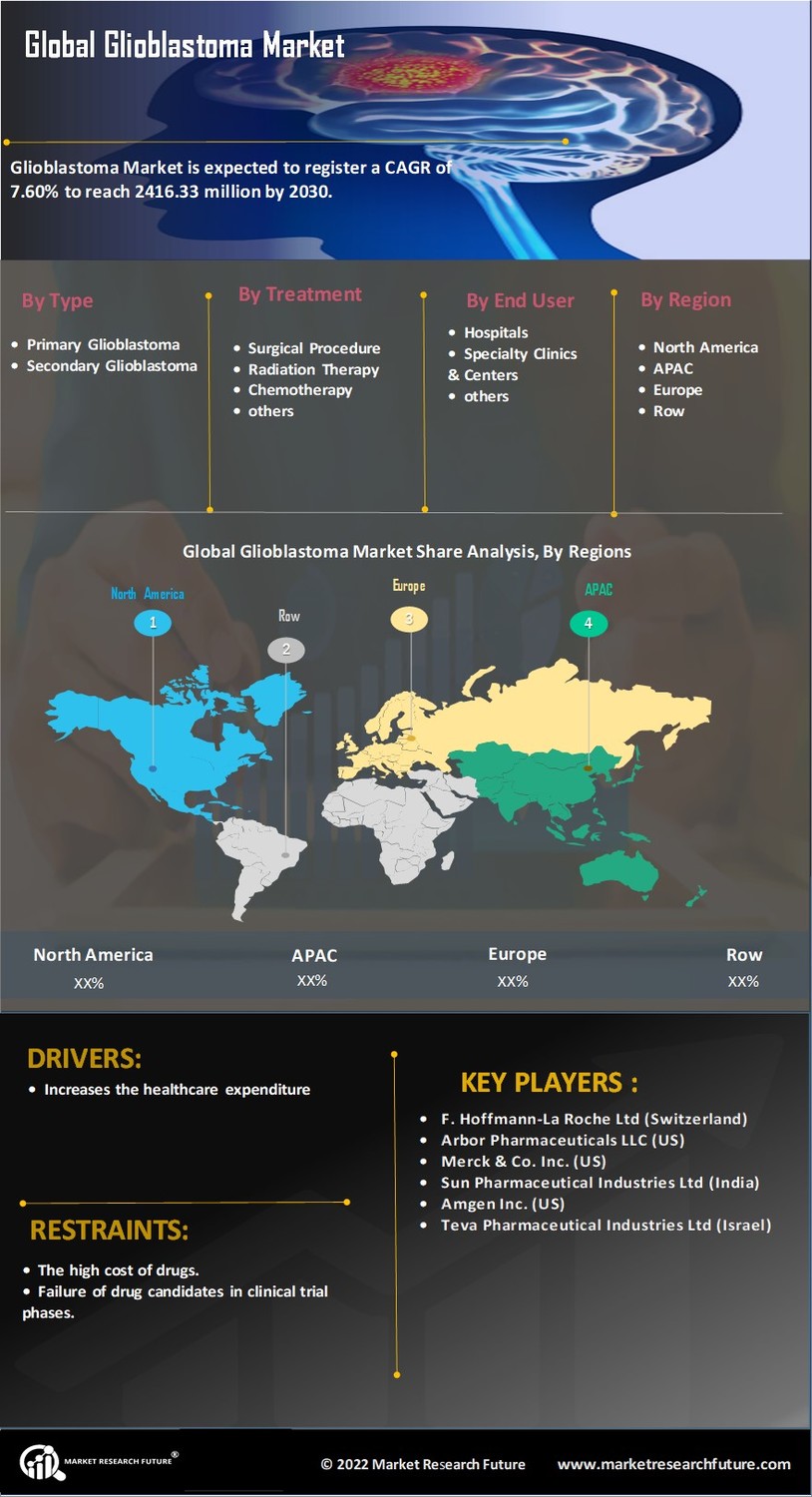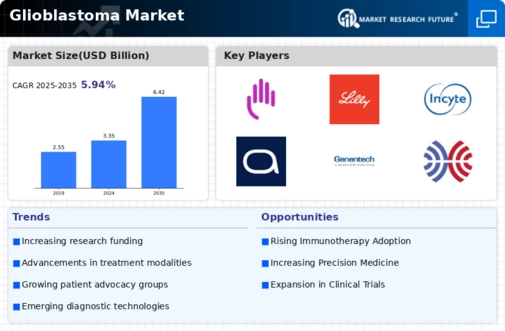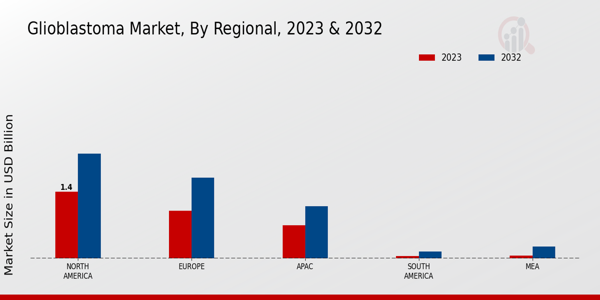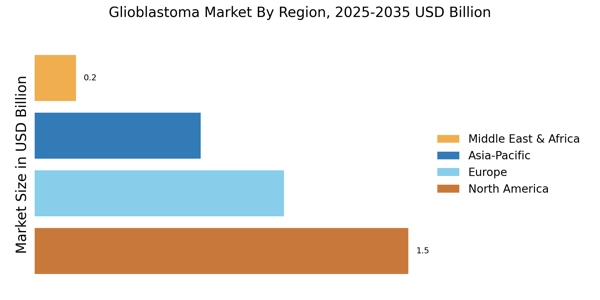Growing Awareness and Advocacy
Growing awareness and advocacy surrounding glioblastoma are driving factors in the Glioblastoma Market. Increased public and professional awareness about the disease has led to greater demand for effective treatment options. Advocacy groups are actively promoting research funding and supporting patients and families affected by glioblastoma. This heightened awareness is influencing healthcare policies and encouraging the development of comprehensive treatment guidelines. Moreover, educational campaigns are aimed at both healthcare professionals and the general public, emphasizing the importance of early diagnosis and intervention. As awareness continues to grow, it is likely that more resources will be allocated towards glioblastoma research and treatment, further propelling the Glioblastoma Market.
Rising Incidence of Glioblastoma
The increasing incidence of glioblastoma is a critical driver for the Glioblastoma Market. Recent statistics indicate that glioblastoma accounts for approximately 15% of all brain tumors, with an estimated annual incidence rate of 3.19 per 100,000 individuals. This rising prevalence necessitates the development of innovative treatment options, thereby propelling market growth. As the population ages, the likelihood of developing glioblastoma increases, further contributing to the demand for effective therapies. The urgency to address this aggressive form of cancer has led to heightened research and development activities, fostering a competitive landscape within the Glioblastoma Market. Pharmaceutical companies are increasingly investing in clinical trials to explore novel therapeutic approaches, which may lead to improved patient outcomes and survival rates.
Emergence of Combination Therapies
The emergence of combination therapies is reshaping the Glioblastoma Market. Recent studies suggest that combining different therapeutic modalities, such as chemotherapy, radiation, and immunotherapy, may enhance treatment efficacy and improve patient outcomes. This approach aims to target multiple pathways involved in glioblastoma progression, potentially overcoming resistance to single-agent therapies. The market is witnessing a trend towards developing combination regimens that leverage the strengths of various treatment options. As clinical evidence supporting the effectiveness of combination therapies accumulates, pharmaceutical companies are likely to invest in this area, leading to a broader range of treatment options for patients. This trend not only addresses the challenges posed by glioblastoma but also signifies a shift towards more personalized and effective treatment strategies within the Glioblastoma Market.
Increased Funding for Research and Development
Increased funding for research and development is a pivotal driver for the Glioblastoma Market. Governments and private organizations are recognizing the urgent need to combat glioblastoma, leading to enhanced financial support for research initiatives. For instance, the National Institutes of Health has allocated millions of dollars towards glioblastoma research, aiming to uncover new treatment avenues. This influx of funding is facilitating the exploration of novel therapeutic agents, including targeted therapies and immunotherapies. As a result, the Glioblastoma Market is experiencing a surge in clinical trials, which are essential for validating new treatment options. The commitment to advancing research not only fosters innovation but also enhances collaboration among academic institutions, pharmaceutical companies, and healthcare providers.
Technological Advancements in Treatment Modalities
Technological advancements in treatment modalities are significantly influencing the Glioblastoma Market. Innovations such as precision medicine, which tailors treatment based on individual genetic profiles, are gaining traction. Furthermore, the integration of artificial intelligence in treatment planning and monitoring is enhancing the efficacy of therapies. The market is witnessing a surge in the development of novel drug delivery systems, including nanoparticles and convection-enhanced delivery, which aim to improve drug penetration in brain tissues. These advancements not only promise better therapeutic outcomes but also attract substantial investments from stakeholders. The global market for glioblastoma therapies is projected to reach USD 3.5 billion by 2026, reflecting the potential of these technological innovations to reshape the Glioblastoma Market.



















Leave a Comment